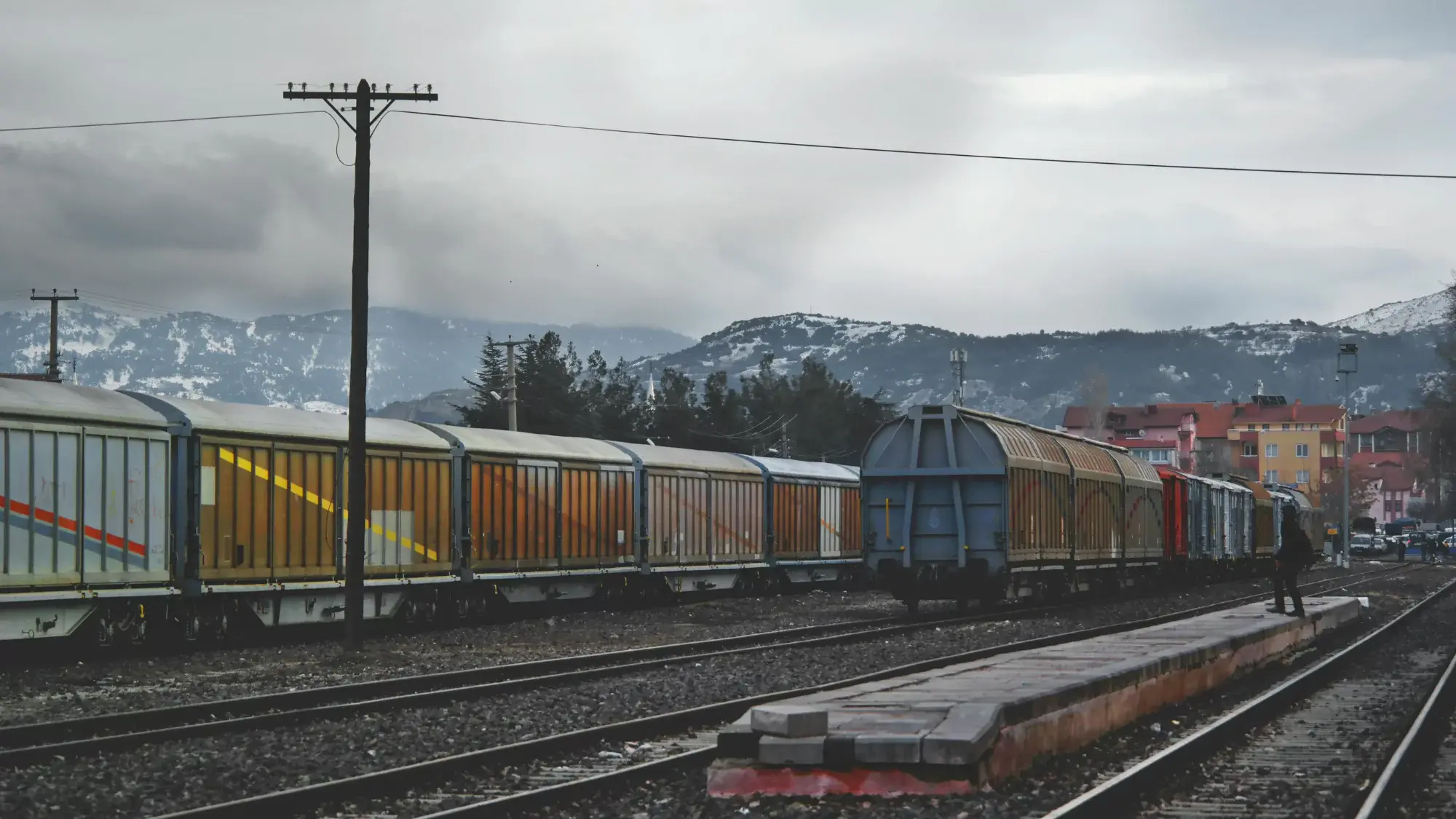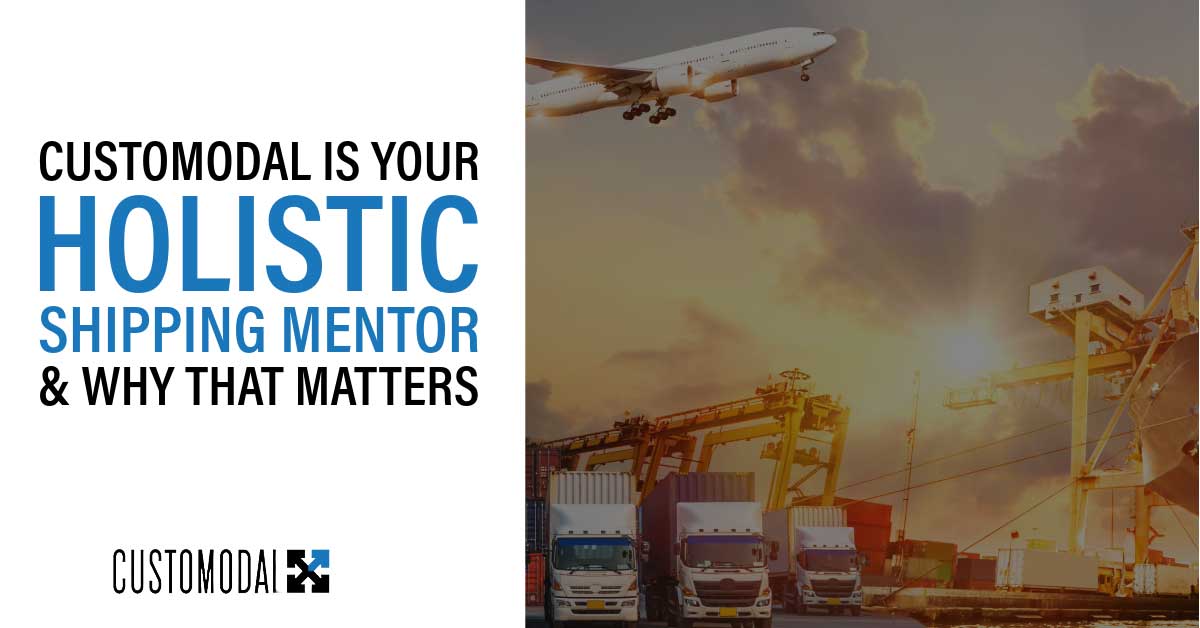
From bustling ports to winding rail lines, the world of freight shipping is vast and varied. But are you leveraging the right transportation modes for your business needs?
By understanding your options when it comes to freight transportation, you can unlock significant advantages for your business. This blog will provide the knowledge you need to choose the perfect shipping solutions, streamlining your supply chain and fueling growth.
The Basics of Freight Shipping
Freight shipping is the process of transporting large quantities of goods–raw materials, finished products, you name it–from one location to another. Think of it as the lifeblood of the supply chain, ensuring that businesses can source materials, manufacture products, and deliver them to customers efficiently. Without a robust freight shipping system, global commerce as we know it would grind to a halt.
But freight isn't a one-size-fits-all thing, which means you'll have to leverage different transportation modes. Choosing the right shipping method is like choosing the right tool for a job. You wouldn't use a hammer to screw in a nail, right? Similarly, you wouldn't ship a time-sensitive package by sea when air freight is an option (albeit a more expensive one).
Key factors to consider include cost, speed, distance, and the specific characteristics of your cargo. Ignoring these factors is like navigating with a broken compass–you might end up in the wrong place, at the wrong time, and with a hefty bill. So, taking the time to assess your needs and understand your options is crucial for successful freight shipping.
Exploring Different Freight Transportation Modes
Let's explore the diverse world of freight transportation modes. Each offers unique strengths and weaknesses, making the selection process a critical decision for any business.
Trucking
Trucking, the undisputed king of the road, is the most prevalent mode of freight transportation. It's the very backbone of domestic commerce, offering unparalleled flexibility and true door-to-door delivery—a crucial advantage in today's fast-paced world. Need to get goods from a distribution center in Dallas to a retail store in Oklahoma City? Trucking is likely the most practical and often the only viable solution. This ubiquity makes it an essential component of nearly every supply chain.
However, while trucking boasts impressive versatility, it isn't without its inherent challenges. Traffic congestion, unpredictable weather disruptions, and the persistent and increasingly problematic driver shortages can all lead to frustrating and costly delays. These factors underscore the importance of proactive planning and contingency strategies.
The trucking landscape itself is diverse, offering various service types tailored to different needs. We see everything from Full Truckload (FTL) for large shipments occupying an entire trailer to Less Than Truckload (LTL) for smaller loads consolidated with other shipments to optimize costs. LTL shipping allows businesses to share trailer space and thus reduce expenses, making it a popular option for smaller and medium-sized businesses. Then there's expedited shipping, which provides a faster, albeit pricier, option for time-sensitive deliveries where speed is paramount. Understanding the nuances of each type of service is key to making informed decisions.
Trucking commands a significant market share, but this dominance also means increased competition and the need for businesses to differentiate themselves. For sophisticated businesses, optimizing trucking involves more than just choosing FTL or LTL. It requires a deep understanding of the intricacies of the industry.
Rail
Rail, the iron horse of freight shipping, plays a vital, though often overlooked, role in long-distance transportation, particularly for bulk commodities. Think raw materials like coal, agricultural products like grain, or construction materials–these are often efficiently and economically moved across vast distances by rail. Rail's strength lies in its ability to transport massive quantities of goods over long distances, making it a key player in moving goods across the country.
Rail offers excellent cost-effectiveness for these large, heavy shipments and boasts superior fuel efficiency compared to trucking. This makes it a more environmentally friendly transportation option, a factor of increasing importance in today's business climate. This fuel efficiency translates not only to cost savings but also to a smaller carbon footprint, appealing to companies with sustainability initiatives.
However, rail's Achilles' heel is its limited accessibility and slower transit times. Unlike trucking, which can offer door-to-door service, rail requires access to rail lines and often necessitates additional transportation, like trucking, for the "last mile" delivery. It's generally not ideal for time-sensitive goods or shipments requiring precise, point-to-point delivery. This limitation makes it less suitable for businesses with tight deadlines or those requiring direct delivery to specific locations.
Intermodal transportation, seamlessly combining rail with trucking, can effectively bridge this gap, offering a compelling balance of cost-effectiveness for the long haul and the flexibility of trucking for the final mile. This approach leverages the strengths of both modes, allowing businesses to optimize their logistics strategy. For example, goods can be transported long distances by rail and then transferred to trucks for delivery to their final destination. Effective rail management requires a deep understanding of the rail network, its limitations, and its potential.
Ocean Freight
For international shipping, ocean freight is the undisputed champion. Its sheer capacity, utilizing massive container ships that traverse the globe, allows for the movement of colossal volumes of goods at remarkably low costs. This cost-effectiveness is particularly appealing for businesses involved in global trade, where large quantities of goods need to be transported across continents.
Containerization has revolutionized ocean freight, providing a standardized and secure way to transport goods across the globe, simplifying handling and reducing the risk of damage. These massive steel boxes have become ubiquitous symbols of global trade, efficiently moving everything from raw materials to finished consumer products.
But, while undeniably cost-effective for large volumes over long distances, ocean freight suffers from long transit times, often measured in weeks or even months. This makes it unsuitable for time-sensitive goods or businesses operating on tight deadlines. Furthermore, ocean freight is susceptible to potential delays due to unpredictable weather patterns, port congestion, geopolitical events, or labor disputes. These factors can disrupt supply chains and lead to significant delays, highlighting the importance of careful planning and risk mitigation strategies.
For businesses engaged in international trade, mastering ocean freight is essential. It requires a deep understanding of Incoterms, shipping routes, carrier alliances, port operations, and international trade agreements. Building strong relationships with freight forwarders, customs brokers, and shipping lines is crucial for navigating the complexities of ocean freight and ensuring smooth and efficient transportation.
Air Freight
When time is truly of the essence, air freight takes center stage. It's the go-to option for time-sensitive shipments like pharmaceuticals, high-value electronics, or critical replacement parts where delays are simply unacceptable. The speed of air freight is unmatched, allowing businesses to deliver goods to virtually any location in the world within a matter of days if not hours.
While undeniably fast, air freight comes with a hefty price tag, making it the most expensive mode of transportation. This cost is often justified by the urgency of the shipment and the need to avoid costly delays. It's generally reserved for situations where speed trumps cost considerations, such as in the delivery of critical medical supplies or high-value perishable goods.
For businesses utilizing air freight, optimizing packaging to minimize weight and volume, and coordinating logistics seamlessly with airlines and ground handlers are absolutely critical for maximizing efficiency and minimizing expenses. Every kilogram counts in air freight, so careful consideration must be given to packaging materials and design. By understanding the intricacies of air freight, businesses can leverage its speed and efficiency to gain a competitive advantage in the marketplace.
Choosing the Right Freight Shipping Method
Choosing the right freight shipping method is a critical decision that can significantly impact your business's bottom line and customer satisfaction. It's not a one-size-fits-all scenario; the optimal choice depends on a variety of factors, and understanding these factors is key to making informed decisions.
Cost: How much are you willing to spend on transportation?
- Ocean freight is generally the most cost-effective for large volumes over long distances.
- Air freight is the most expensive but fastest.
- Trucking and rail fall somewhere in between, with trucking offering more flexibility and rail providing greater capacity.
Speed: How quickly do your goods need to arrive?
- Air freight is the undisputed champion of speed.
- Ocean freight is the slowest.
- Trucking offers a balance of speed and cost.
- Rail can be a good option for long-distance shipments where time is less critical.
Distance: What is the total distance your shipment needs to travel?
- For long distances, rail and ocean freight are often the most economical choices.
- Trucking is ideal for shorter distances and offers greater flexibility in terms of routing and delivery options.
- Air freight can be used for any distance, but its cost-effectiveness diminishes for shorter distances.
Cargo Type: What is the nature of the goods you are shipping?
- Perishable goods or time-sensitive items may necessitate air freight.
- Heavy or bulky items may be better suited for rail or ocean freight.
- Hazardous materials or specialized equipment may require specialized carriers and handling procedures.
By carefully considering these factors and understanding the strengths and weaknesses of each transportation mode, you can create a customized solution that meets your specific needs and optimizes your supply chain. It's a strategic decision that requires careful analysis and planning, but the rewards are significant—improved efficiency, reduced costs, and enhanced customer satisfaction.
Looking for support in your freight shipping processes? Let Customodal be your trusted freight broker, helping you navigate the world of freight shipping. Our team of experienced professionals understands the intricacies of the transportation industry and can help you develop customized solutions that meet your specific needs and optimize your supply chain.
Contact Customodal today and let our experts help you navigate the complexities of transportation.





